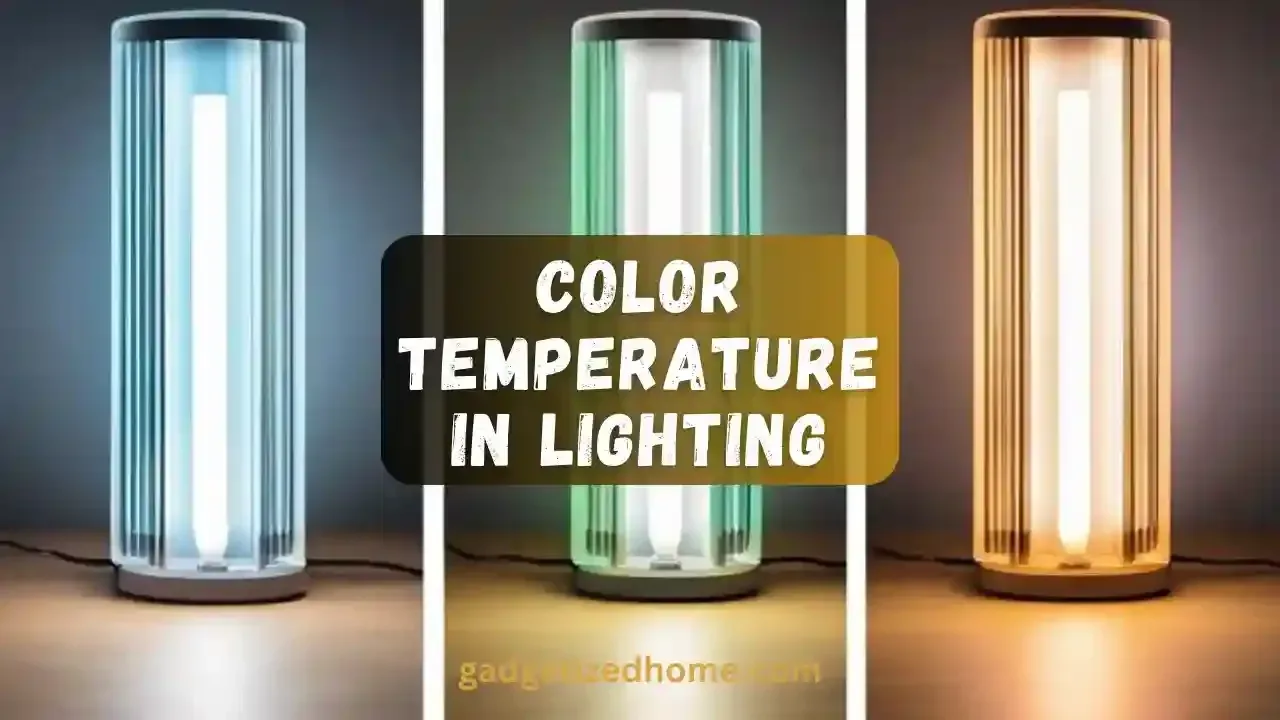Lighting sets the mood and atmosphere in any space, whether it’s your living room or office. It can transform how comfortable or inviting a room feels. Choosing the right type of lighting can make a big difference in how you experience a space.
One key factor that affects this is color temperature. If you’ve ever noticed how some lights feel warm and relaxing while others feel bright and sharp, you’ve experienced the difference in color temperature.
What is Color Temperature?
Color temperature is what gives light its “feel.” It’s measured in Kelvins (K) and describes the color of light a bulb emits. You’ve probably noticed how some lights look warmer or cooler depending on where they are used.
Lower color temperatures (around 2000K-3000K) give off a warm, yellowish glow. Think of sunset or cozy living room lights. Higher temperatures (5000K-6000K) produce a cooler, bluish-white light, similar to daylight or office lighting.
This affects how we feel in a space. Warm light feels soft and relaxing, perfect for winding down. Cool light is crisp and energizing, great for working or staying alert.
The Kelvin Scale
The Kelvin scale measures color temperature, and it’s the go-to for lighting. It tells us whether a light is warm or cool by assigning it a number. The lower the number, the warmer the light; the higher the number, the cooler it gets.
Here’s a quick breakdown of the Kelvin ranges you’ll encounter:
- 2000K – 3000K: This range gives off warm, yellowish light. It’s the kind of cozy glow you’d find in a sunset or a flickering candle.
- 3000K – 4000K: Here, the light turns into a neutral white. It’s soft and calming, perfect for spaces where you want a relaxed vibe.
- 4000K – 5000K: This is cool white light. It feels crisper and more vibrant, making it ideal for workspaces or kitchens.
- 5000K – 6500K: At this level, you get daylight. It’s bright and bluish, mimicking natural sunlight, which can really energize a room.
Understanding these ranges can help you choose the right lighting for your space.
Warm Light vs. Cool Light
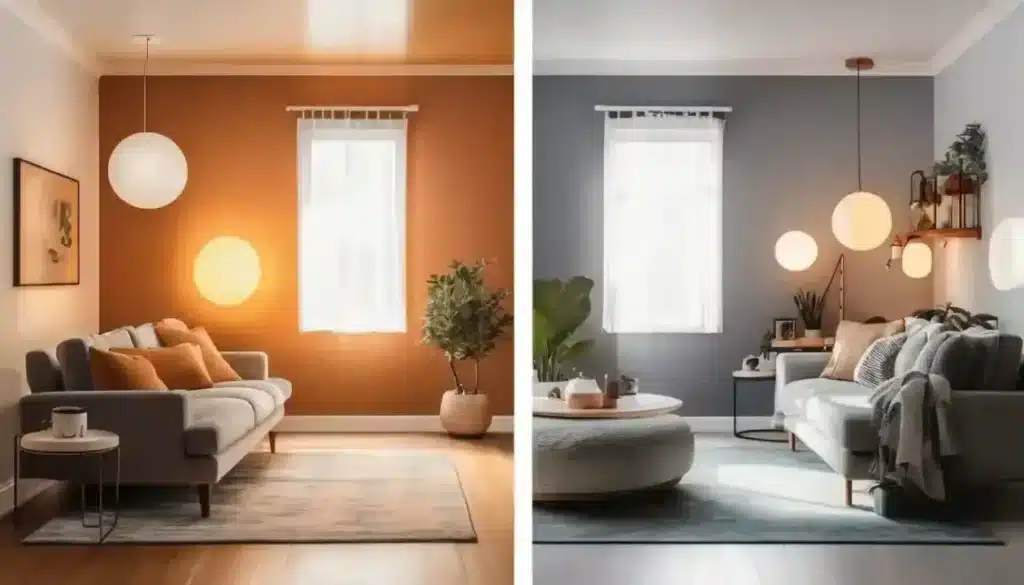
Warm light, found in the lower Kelvin ranges, creates a cozy and inviting atmosphere. It’s the kind of light that makes you feel at home. This is perfect for spaces like living rooms, bedrooms, and dining areas where you want to relax and unwind.
On the flip side, cool light comes from the higher Kelvin ranges. It’s more energizing and stimulating, making it great for staying alert. You’ll often find this type of lighting in offices, kitchens, and other task-oriented spaces where focus is key.
Choosing between warm and cool light really depends on how you want to feel in a room. Do you want to relax or get things done? That decision will guide your lighting choices.
How Color Temperature Impacts Mood and Productivity
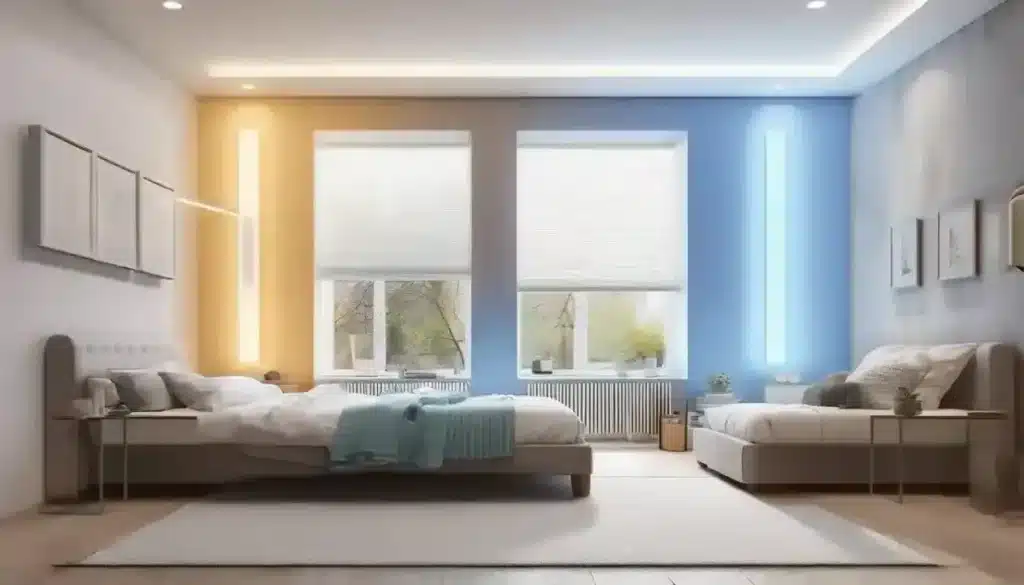
Our mood and productivity are significantly influenced by color temperature from a psychological perspective. Different lighting can trigger different feelings, affecting how we act and feel in a space.
Warm lighting is all about relaxation. It’s great for winding down after a long day and perfect for evening settings. You’ll want this kind of light in places where you relax, like your living room or bedroom.
Cool lighting, on the other hand, boosts alertness and focus. It’s ideal for getting things done and staying productive. You’ll find it works best in workspaces, kitchens, and especially during morning routines when you need that extra spark to start your day.
Selecting the Ideal Color Temperature for Each Room
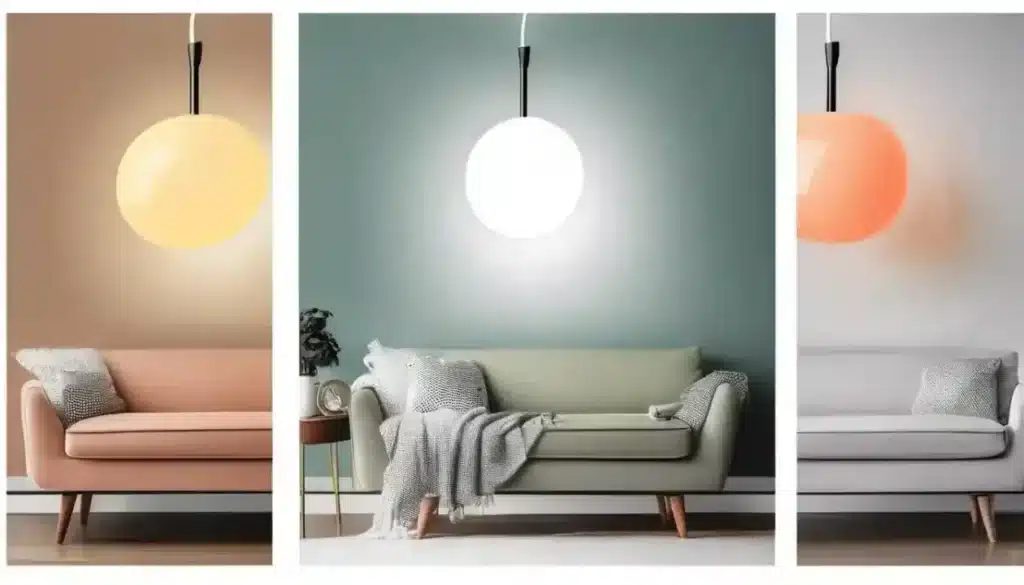
Selecting the ideal color temperature for each room can make a huge difference in how you feel in your home. It’s all about matching the light to the purpose of the space.
Warm lighting (around 2700K-3000K) is the way to go for your living room and bedroom. This creates a cozy, inviting atmosphere that’s perfect for relaxing after a long day.
In the kitchen and bathroom, a neutral or cool white light (3500K-4500K) is recommended. This kind of lighting helps you see better while cooking or getting ready, creating a fresh and clean vibe.
When it comes to your office or workspace, aim for daylight or cool lighting (4000K-6000K) to enhance focus. This helps keep you alert and productive throughout your tasks.
For outdoor lighting, a mix works best. Use warm light for ambiance and a bit of cool light for security. This balance makes your outdoor space welcoming while ensuring safety at night.
Color Temperature in LED vs. Traditional Lighting
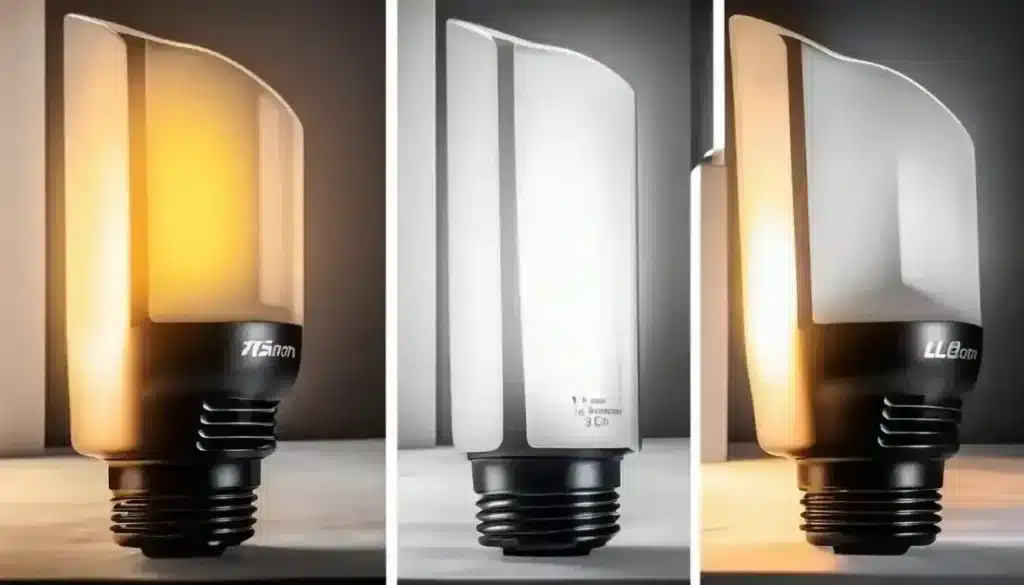
When it comes to color temperature, modern LED lighting offers a broad range of options. You can easily find LEDs that mimic warm candlelight or bright daylight. This flexibility lets you set the perfect mood for any space.
In contrast, traditional incandescent bulbs were usually warm, sitting lower on the Kelvin scale. They provided that cozy glow we all love, but you didn’t have many choices when it came to color temperature.
One of the best things about LEDs is their adjustability and energy efficiency. You can change the light’s warmth to fit your needs, all while saving money on energy bills. This makes LEDs not just smart but also super practical for everyday use, especially when paired with cheap chandeliers that enhance your home’s style without breaking the bank.
Understanding Color Rendering Index (CRI)
The Color Rendering Index (CRI) gauges how accurately a light source reflects colors in comparison to natural light. It works alongside color temperature, giving you a fuller picture of how a light will look in your space. Higher CRI numbers mean better color accuracy, so you can truly appreciate the hues in your home.
Choosing lighting with a high CRI—ideally above 80—is crucial for rendering colors more accurately. This is especially important in areas like the kitchen or living room, where you want colors to pop and feel true to life. When you have good CRI lighting, it enhances your experience and helps you enjoy your space even more.
Smart Lighting and Adjustable Color Temperature
Smart lighting is revolutionizing how we control the atmosphere in our homes. Smart bulbs let you adjust the color temperature with just a tap on your phone or a quick voice command. This means you can easily change the vibe of a room to match your mood or activity.
Being able to alter the lighting creates a whole new level of comfort. Want a cozy evening with warm light? Or maybe a bright, energizing space for work? You can switch it up in seconds!
Plus, smart lighting can transition between warm and cool throughout the day. This mimics natural daylight, helping you wake up gently in the morning and unwind in the evening. It’s like having your own lighting assistant right at your fingertips!
Energy Efficiency and Color Temperature
Color temperature can impact energy usage in surprising ways. Cooler temperatures often appear brighter, which can make them feel more energy-efficient. This brightness can help you use less wattage while still lighting up your space effectively.
LED lights are a game-changer when it comes to energy efficiency, no matter the color temperature. They consume much less power than traditional bulbs, helping you save money on your energy bills. Plus, you get the bonus of choosing any color temperature you want, all while being kinder to the planet.
Common Myths about Color Temperature
There are plenty of myths floating around about color temperature. One common misconception is that bright white lighting is always better. While it can be great for certain tasks, it’s not ideal for every situation.
For instance, using bright cool light in bedrooms or living spaces can create a harsh atmosphere. You might find it hard to relax when the lighting feels too stark. It’s all about choosing the right light for the right place to create a comfortable environment.
Conclusion
Understanding color temperature is key when making lighting choices for your home. It can dramatically enhance both the function and ambiance of each room.
Choosing the right color temperature helps create spaces that feel just right, whether you want to relax or stay productive.
Don’t hesitate to experiment with different color temperatures in various rooms. Try out warm lights in the living room and cool lights in the kitchen to find what works best for you. It’s all about personal preference and creating a space that feels like home!
Recent Posts
- 10 Best Nesting Tables for Small Spaces and Apartments
- 10 Best Ladder Bookshelves for Stylish Home Organization
- 9 Best Storage Trunks for Home Organization and Style
- 10 Best Room Dividers for Privacy and Stylish Spaces
- 11 Best Bar Carts for Entertaining Guests in Style
- 10 Best Decorative Accent Cabinets for Stylish Home Storage
- 9 Best Convertible Futons and Sofa Beds for Small Apartments
- 10 Best Modular Furniture Sets for Flexible and Functional Living
- 10 Best Cube Storage Units for Organized and Stylish Homes
- 9 Best Closet Organizer Systems for Maximizing Your Space
- 10 Best Murphy Beds and Wall Beds for Small Guest Rooms
- 15 Best Folding Furniture Pieces for Small Apartments and Studios
- 12 Best Storage Ottomans for Small Spaces and Apartment Living
- 9 Best Activity Tables for Kids for Fun and Learning
- 9 Best Kids’ Dressers for Organized Bedrooms
Our Main Categories
Ceiling Lights
- Chandeliers
- Wheel Chandeliers
- Pendant Lights
- Flush Mount Lights
- Track Lights
- Recessed Lights
- Semi Flush Mount Lights
- Cove Lights
Ceiling Fans with Lights
- Indoor Ceiling Fans
- Outdoor Ceiling Fans
- Ceiling Fans Light Kits
- Ceiling Fans Accessories
Wall Lighting
- Flush Mount Wall Lighting
- Wall Sconces
- Night Lighting
- Picture Lights
- Swing Arm Lights
- Step Lights
- Hall Lights
- Swing Arm Lamps
Outdoor Lighting
- Outdoor Wall Lights
- Outdoor Ceiling Lights
- Landscape Lighting
- String Lights
- Post Lights
- Motion Sensor Lights
- Dusk to Dawn Lights
- Lanterns
- Garden Lights
- Barn Lights
Lamps and Lamp Shades
- Table Lamps
- Floor Lamps
- Lamp Sets
- Desk Lamps
- Reading Lights
- Book lights
- LED Lamps
- Lamp Shades
Kitchen Lights
- Kitchen Island Lights
- Under Cabinet Lights
- Over Sink Lighting
- Under Cabinet Strip Lights
- Inside Cabinet Lights
Bathroom Lighting
- Bathroom Vanity Lights
- Bathroom Sconces
Special Lights
- Smart Bulbs
- Energy Efficient Lights
- Christmas Lights
- Festive String Lights
- Solar Lights

